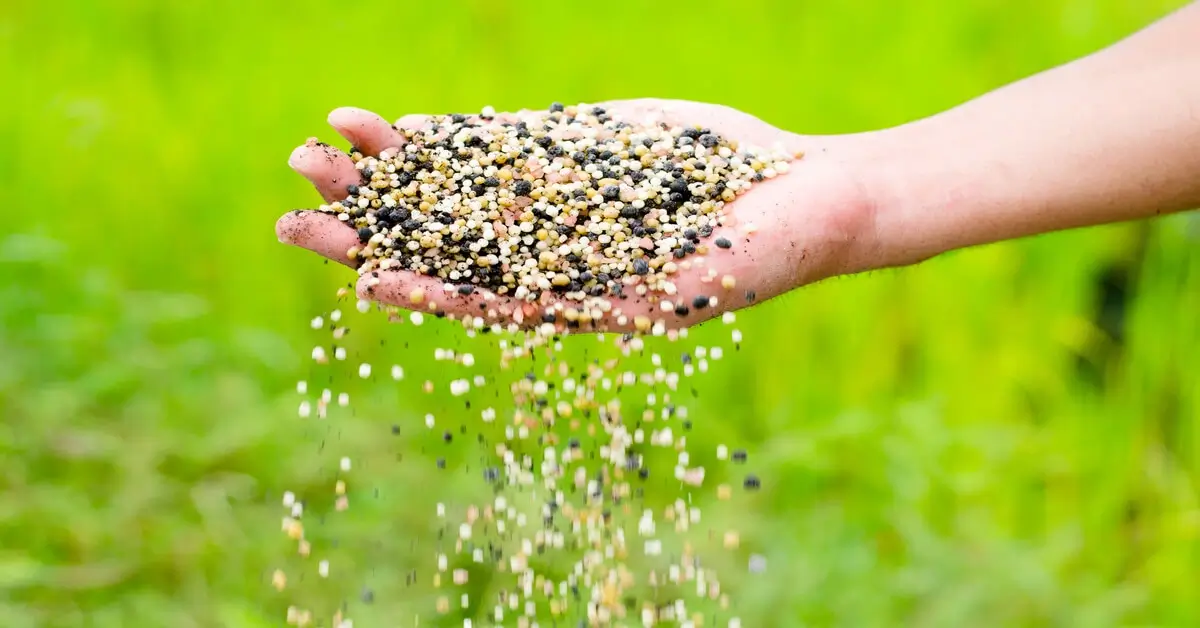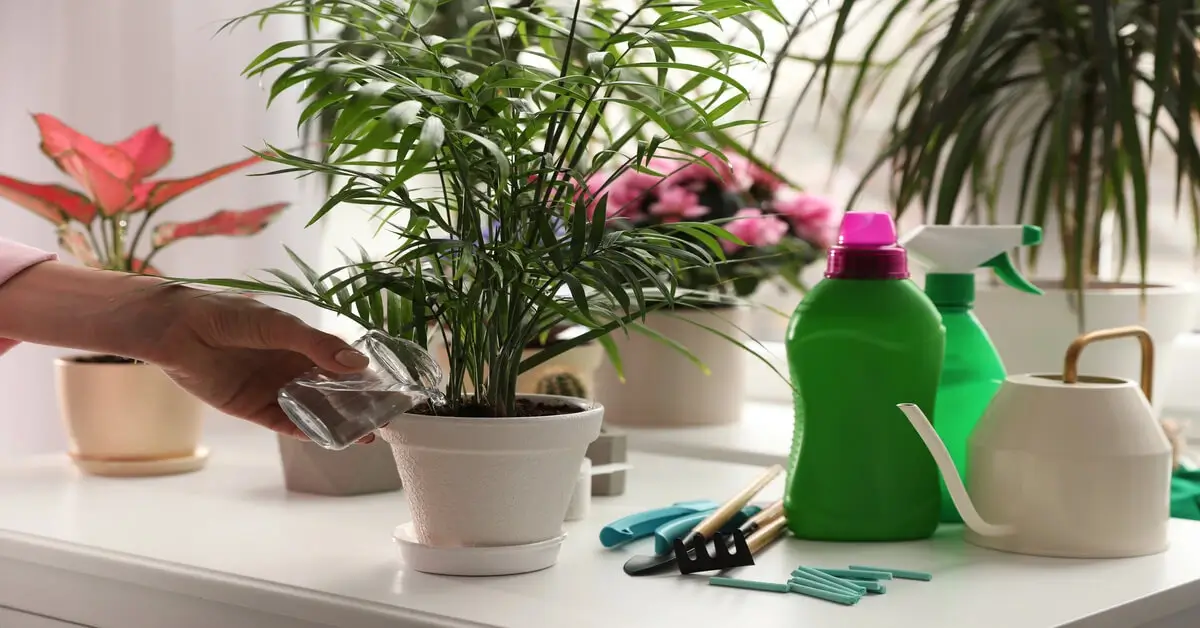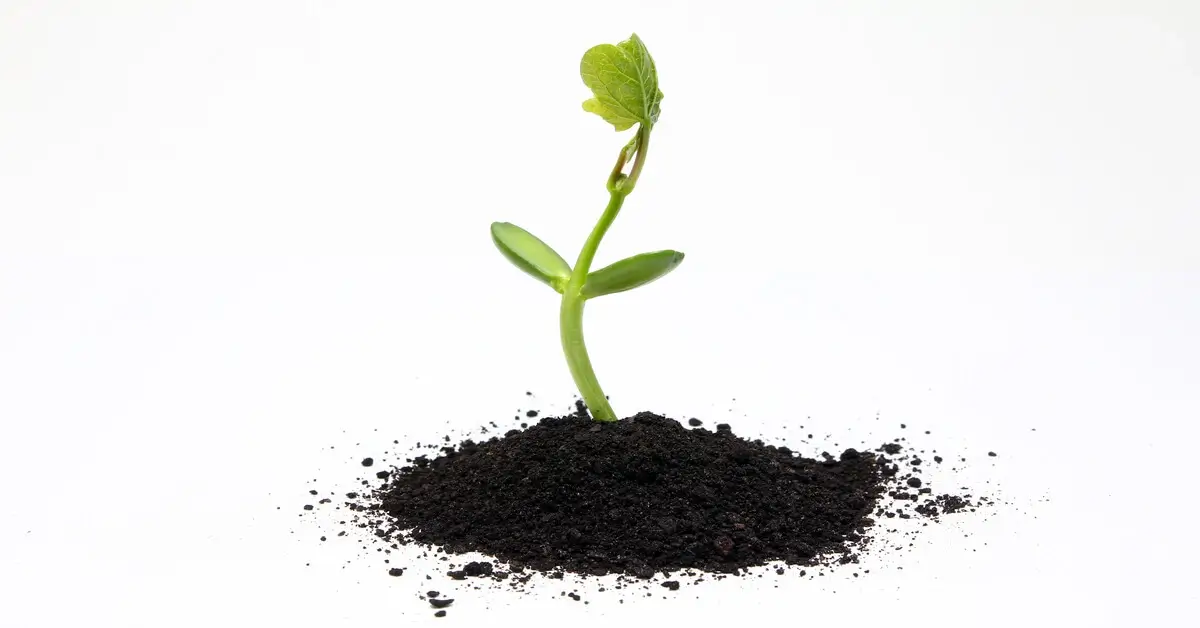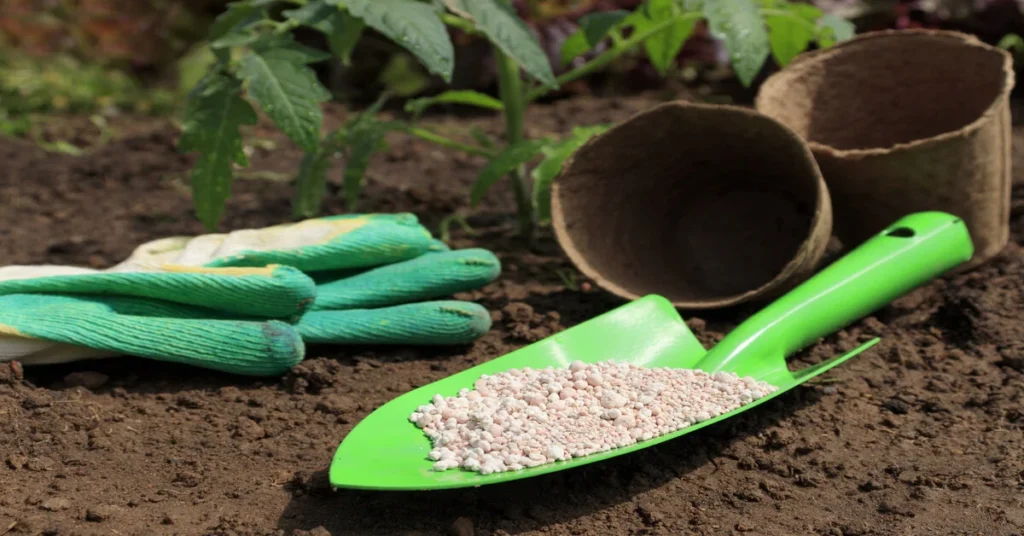Have you ever wondered about the difference between plant food and fertilizer? You’re not alone if you’re scratching your head in the gardening aisle. This comprehensive guide aims to demystify the terms “plant food” and “fertilizer,” which are often used interchangeably but have distinct roles in plant nutrition. Whether you’re a seasoned gardener or just starting your indoor plant collection, this article will give you the essential knowledge to make informed choices for healthy plant growth.
What is Fertilizer?

Fertilizer is a substance added to the soil to enhance its nutrient content, promoting healthy plant growth. It typically contains essential nutrients for plant growth, such as nitrogen, phosphorus, and potassium, commonly called NPK. Fertilizers come in various forms, including organic matter like compost and manure and synthetic or chemical fertilizers.
Why Fertilizer is Used for House Plants?

Fertilizers are applied to house plants primarily to supplement the nutrients in the soil, ensuring healthy plant growth. Unlike their outdoor counterparts, indoor plants have limited access to natural soil nutrients. Fertilizers provide essential macronutrients like nitrogen for leaf growth, phosphorus for root development, and potassium for overall plant health. They can also supply micronutrients such as zinc, boron, and manganese, crucial for specific plant functions like photosynthesis and sugar production.
What is Plant Food?
Plants themselves make plant food. It’s a byproduct produced when plants convert water, carbon dioxide, sunlight, and soil nutrients into sustenance for their growth. During photosynthesis, plants transform these elements into sugars (glucose) and oxygen. Plants make their food by taking nutrients from the soil through their roots and converting them into sugars and oxygen.
In a commercial context, plant food is a nutrient solution designed to supplement the essential elements that plants need for growth and development. Unlike fertilizers, designed to improve soil structure and nutrient content, manufacturers specifically design plant food for direct absorption by the plant. It usually comes in liquid form and can be applied directly to the plant’s roots or foliage. These solutions are balanced to provide a range of macronutrients and micronutrients, including nitrogen, phosphorus, potassium, and trace elements like zinc and manganese.
The Difference Between Fertilizer and Plant Food
While “fertilizer” and “plant food” are often used interchangeably, they serve different purposes. People use them in distinct ways for plant care. Here’s how they differ:
- Composition: Fertilizers primarily enrich the soil with essential nutrients like nitrogen, phosphorus, and potassium (NPK). On the other hand, plant food is a balanced nutrient solution designed for direct absorption by plants.
- Application: Fertilizers are generally added to the soil and can come in various forms like granules, spikes, or liquid. Plant food, usually liquid, can be applied directly to the plant’s roots or foliage.
- Purpose: The primary purpose of fertilizer is to improve soil structure and nutrient content, making it more conducive for plant growth. Plant food aims to provide immediate nutrients to the plant, supplementing what it might not get from the soil or water.
- Nutrient Range: Fertilizers often focus on macronutrients like NPK but may lack certain micronutrients. Plant food solutions are usually more balanced, containing both macronutrients and micronutrients.
- Cost: Fertilizers can be more cost-effective when treating large soil areas, while plant food solutions may be more suitable for smaller indoor plants due to their higher cost per application.
Type of Nutrient | Nutrients | Role in Plant Growth |
Macronutrients | Nitrogen (N) | Essential for leaf growth and green color (chlorophyll production). |
Phosphorus (P) | Important for root development, flower, and fruit production. | |
Potassium (K) | Aids in overall plant health, disease resistance, and water regulation. | |
Calcium (Ca) | Important for cell wall structure and root development. | |
Magnesium (Mg) | Component of chlorophyll, helps in photosynthesis. | |
Sulfur (S) | Helps in root growth and seed production. | |
Micronutrients | Zinc (Zn) | Essential for stem growth and leaf size. |
Boron (B) | Important for cell division and seed development. | |
Manganese (Mn) | Aids in photosynthesis and nitrogen metabolism. | |
Iron (Fe) | Required for chlorophyll synthesis. | |
Copper (Cu) | Helps in respiration and photosynthesis. | |
Molybdenum (Mo) | Aids in the formation of legume nodules. | |
Chlorine (Cl) | Helps in osmosis and ionic balance. |
Chemical or Organic Fertilizers Advantages and Disadvantages

You have two main options when fertilizing plants: chemical (synthetic) fertilizers and organic fertilizers. Each has advantages and disadvantages, which can influence your choice depending on your gardening needs.
Advantages
- Chemical Fertilizers
- Quick Action: Chemical fertilizers work rapidly, providing immediate nutrients to the soil and plants.
- Precision: These fertilizers are scientifically formulated to provide exact amounts of nutrients, ensuring proper plant nutrition.
- Ease of Use: Generally available in various forms, making them convenient for different types of plants and gardening methods.
- Organic Fertilizers
- Eco-Friendly: Made from natural materials, reducing the risk of environmental pollution.
- Soil Health: Organic matter like compost improves soil structure and water retention.
- Long-Term Benefits: Nutrients are released slowly, providing long-lasting nourishment for plants.
Disadvantages
- Chemical Fertilizers
- Environmental Impact: This can contribute to water pollution and soil degradation.
- Cost: Generally more expensive than organic options, especially long-term.
- Nutrient Imbalance: Risk of “burning” plants due to excessive nutrient concentration.
- Organic Fertilizers
- Slow Release: Nutrients are released more slowly, which may not be ideal for plants requiring immediate nourishment.
- Inconsistency: Nutrient levels can vary, making it harder to guarantee precise plant nutrition.
- Bulk and Weight: Organic fertilizers like manure and compost can be bulky and heavy, making them less convenient for small-scale or indoor gardening.
Conclusion
Navigating the world of plant nutrition can be complex, but understanding the key differences between plant food and fertilizer can make all the difference. While manufacturers design fertilizers to enrich the soil and provide a long-term nutrient base, plant food directly offers your plants a quick nutrient boost. Whether you opt for chemical or organic fertilizers, each has pros and cons that cater to different gardening needs.
In summary, chemical fertilizers may be the way to go if you’re looking for immediate results and precise nutrient ratios. Organic fertilizers are a solid choice for a more eco-friendly and soil-enhancing solution. Ultimately, the best approach is often balanced, incorporating both plant food and fertilizer to meet the unique needs of your plants.



